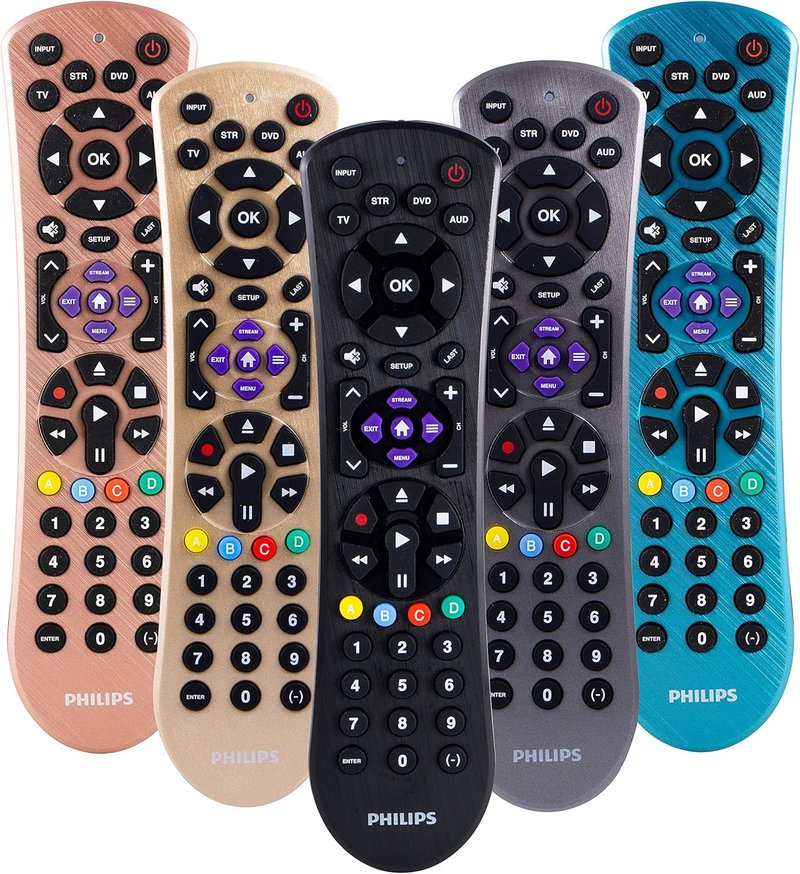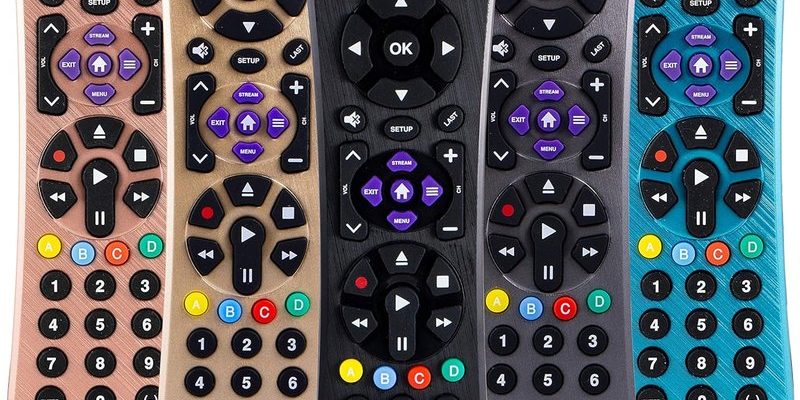
Getting a universal remote to work with every device in your living room sometimes feels like trying to fit a square peg into a round hole. There’s a lot of talk out there about how “universal” these remotes really are. Philips universal remotes, for example, promise compatibility with all sorts of gadgets. But do they actually play nice with Roku TVs? Let’s untangle the wires and figure out what’s myth and what’s reality.
What Exactly Is a Philips Universal Remote?
First things first—what makes a remote “universal” anyway? Philips universal remotes are designed to control a whole bunch of different devices: TVs, DVD players, sound systems, streaming boxes—you name it. Instead of juggling a pile of remotes (or, let’s be honest, losing half of them behind the couch), you can program a Philips universal remote to handle almost everything.
These remotes come in various models. Some are pretty simple, with basic buttons for things like volume, channel, and power. Others are decked out with extra features—think smart home integration or backlighting for those midnight Netflix binges. The key idea behind Philips remotes is flexibility. They use library codes that you enter or sync, letting a single remote “speak the language” of many brands and types of devices.
But here’s the fine print: not every universal remote works seamlessly with every TV or device, especially when those gadgets use different types of wireless signals or have unique features. So, while the dream is one remote to rule them all, there’s a bit more to the story when we throw Roku TVs into the mix.
How Do Roku TVs and Their Remotes Work?
Now, Roku TVs play in their own league. Unlike regular “dumb” TVs, Roku TVs have built-in streaming software—think Netflix, Hulu, YouTube, all baked into the TV itself. The standard Roku remote is a little different from classic TV remotes because it communicates using a special type of signal. Some Roku TV remotes work over infrared (IR), while others use Wi-Fi direct, which is basically like a private wireless handshake between your remote and your TV.
Why does this matter? Because most universal remotes—including Philips—use infrared. If your Roku TV’s remote talks to the TV using Wi-Fi or Bluetooth instead of IR, a traditional universal remote won’t be able to “speak” to it. You might press buttons all day, but nothing will happen because they’re literally not on the same wavelength.
Confusing, right? Imagine trying to send a text message to someone with an old rotary phone—it’s just not going to connect, no matter how hard you try.
Are Philips Universal Remotes Actually Compatible With Roku TVs?
Okay, here’s the answer you’ve been waiting for. The short version: **Some Philips universal remotes will work with Roku TVs—**but not always, and not for every function.
If your Roku TV receives **infrared (IR) signals** (and most actually do, when it comes to basic TV functions), then a Philips universal remote can usually be programmed to handle the basics—power, volume, input select, maybe channel up/down. That’s a huge relief if you just want to turn the TV on and off or adjust the sound.
But—and it’s a big but—the Philips universal remote can’t replace the *special* buttons unique to Roku’s native remote, like the dedicated Home button, shortcuts to streaming channels, or those cool voice controls. Want to scroll through Roku’s menu or launch Netflix with one click? That’s tougher, because universal remotes typically don’t support all of Roku’s fancy features.
You might be wondering, “Well, how do I know if my Roku TV supports infrared?” Good question. Most TCL, Hisense, and Sharp Roku TVs (which are really common) have IR sensors. If your original Roku remote had to be aimed directly at the TV, that’s a sign it was using IR. If it worked from behind the couch or through a wall, it was probably using Wi-Fi or Bluetooth—meaning a Philips remote won’t be much help.
Programming Your Philips Universal Remote: Step-by-Step
So you’ve got a Philips universal remote and a Roku TV, and you’re thinking, “Let’s get these two playing nice.” Here’s the thing—it’s mostly about the right code. Philips remotes come with a big old list of device codes in the manual or online. The goal is to “teach” your remote how to talk to your Roku TV.
- Find the code: Look up the Philips universal remote code for your Roku TV’s brand (TCL, Hisense, Sharp, etc.)—not “Roku TV,” but the actual TV maker.
- Enter pairing mode: There’s usually a “setup” button you hold until a light flashes. Then, tap the correct device key (like “TV”).
- Type in the code: Enter the code using the number pad. If it works, you’ll see another flash, or the remote might blink twice.
- Test it out: Try turning your TV on, off, and adjusting the volume. If it responds, you’re golden for those basic functions!
If the first code doesn’t work, don’t panic. There are usually several codes for each brand—sometimes you’ll need to try a few. If none work, your TV might use a newer IR profile that the Philips remote doesn’t support—or it might rely solely on wireless communication, which is a dead end for IR-only remotes.
What About Advanced Roku Features? (Spoiler: It’s Tricky)
Here’s where things get a little frustrating. Philips universal remotes are great at basics, but not at specialty features unique to Roku. You won’t get access to the *Home*, *Back*, or *Quick App* buttons that help you zip around the Roku menu. Voice search? Forget it. And don’t even try entering text for passwords or searching for that obscure documentary on Pluto TV—it’s much clunkier with a universal remote.
I’ve tried this myself, and while a universal remote can get you to the “on” switch, you’ll likely end up reaching for your phone or the original remote if you want to do anything more complicated. Some folks buy two remotes: a universal for the boring stuff, and the original for everything else. Honestly, it’s not the minimalist dream we all hope for, but it gets the job done.
If you love using Roku’s smart features, there’s really no substitute for the remote made for your model. Universal remotes are more like a backup plan than a full-time replacement.
Troubleshooting When Your Philips Remote Won’t Work With Roku TV
Got everything set up but your Roku TV ignores your Philips remote? Let’s talk troubleshooting, because sometimes things don’t go according to plan—and it’s not always your fault.
- Double-check the batteries. I know, it sounds silly, but dead or weak batteries trip up remotes more often than you’d think.
- Reset the remote. Sometimes, pressing a wrong button or entering the wrong code can mess things up. Most Philips remotes have a way to do a simple reset—check your manual or look it up online.
- Try another code. Often, there’s more than one code for each TV brand. If code
- Check for obstructions. IR remotes can’t send signals through walls, furniture, or glass cabinets. Make sure you’ve got a clear line of sight.
- Sync issues? If you paired successfully but nothing happens, try removing batteries and re-pairing. Sometimes devices just need a little shake-up to work again.
If all else fails, it could mean your particular Roku TV uses a newer IR code set, or only supports wireless control. In that case, a Philips remote just won’t do the trick.
Universal Remote vs. Roku Original Remote: Which Is Better?
Let me be straight with you—universal remotes are like Swiss Army knives. They’re super handy and great in a pinch, but they don’t replace a full toolbox for every job. The Philips universal remote is fantastic if you’ve got a pile of devices from different brands and just want fewer remotes hogging your coffee table.
But if you’re all about those unique Roku features—like voice commands, quick launch buttons, or that buttery-smooth menu navigation—nothing beats the original remote that came with your Roku TV. The universal remote just can’t do everything, especially the stuff that makes Roku, well, *Roku*.
Still, if your old remote is lost in the abyss forever (possibly with those socks missing from the dryer), a Philips universal remote can help you get by, at least for the basics.
Alternative Solutions: When a Philips Remote Isn’t Enough
Stuck in a situation where the Philips remote won’t work? You’ve got options, and some of them are pretty nifty.
- Roku’s official replacement remote: These are designed to work straight out of the box, including all those smart features. You can order one online or from many electronics stores.
- Roku mobile app: Believe it or not, Roku offers a free mobile app for iOS and Android that turns your phone into a Roku remote—complete with voice search, a keyboard, and even private listening through your headphones. It’s a lifesaver when you’re in a pinch!
- High-end universal remotes: Some fancy universal remotes (think Logitech Harmony) support more advanced Roku features, but these can be pricey and overkill if you just want simple control.
If you’re really into gadgets, the mobile app is surprisingly powerful and often handier than buying a replacement. Plus, you’ll never have to ask, “Where’s the remote?” again—unless, of course, you misplace your phone.
Final Thoughts: Are Philips Universal Remotes Compatible With Roku TVs?
Here’s the real talk: Philips universal remotes can control basic functions on most Roku TVs, especially if your model responds to infrared signals. It’s a solid backup if you lose your original remote or just want something simple for power and volume. But for the real Roku magic—navigating menus, launching apps, or using voice commands—you’ll need either the original remote or something designed specifically for Roku features.
So, if you’re hoping to replace a lost Roku TV remote with a Philips universal one, it’s totally doable for the basics, but don’t expect a full Roku experience. Consider the official Roku remote or the mobile app for the best of both worlds. Whatever route you choose, at least you’ll spend less time fighting with lost remotes—and more time actually watching TV. That’s the goal, right?
